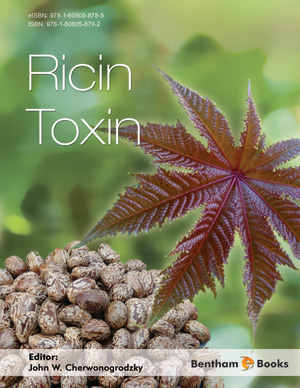Abstract
A major difficulty in developing medical countermeasures against ricin (e.g. passive antibody therapy) is the need to work with authentic ricin, a Schedule 1 Chemical under the Chemical Weapons Convention. Twinstrand Therapeutics Inc. created a benign but antigenically intact variant of ricin by changing the genetic sequence of the A and B chain linker peptide (representing less than 4% of the gene) to block post-translational processing and activation. The toxoid protein, a single polypeptide chain rather than dimer, was produced in a Pichia pastoris expression system in accordance with Good Laboratory Practices (GLP). The toxoid was determined to be 1000-fold less toxic than authentic ricin by both in vitro and in vivo assays, allowing high immunogenic doses to be administered to test animals. Cangene Corporation oversaw a contract in which goats were inoculated with varying schedules and doses of the toxoid in accordance with GLP. DRDC Suffield Research Centre assessed the activity of the resultant goat antibodies in challenges involving the wild type toxin. The goat anti-toxoid antiserum was found to have high anti-ricin neutralizing activity. The collaboration described was supported by the Defence Research and Development Canada’s CBRNe Research and Technology Initiative (CRTI) project 02-0007TA (2003-2005). All partners contributed generous In-Kind support.
Keywords: Ricin, recombinant, toxoid, vaccine, immunoglobulin, anti-ricin, antibody, rescue.






















